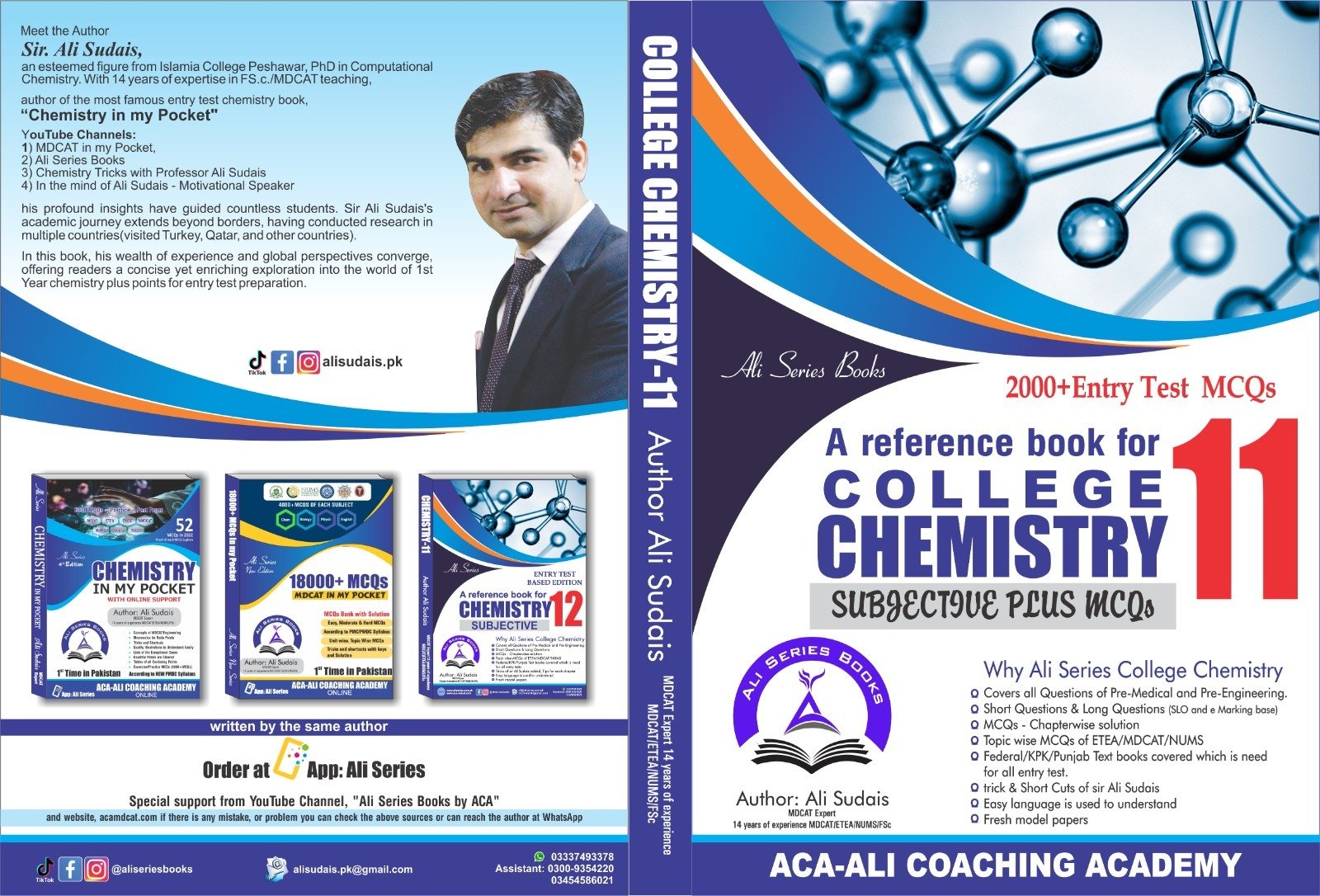Currently Empty: ₨ 0
| This unit covers the following topics for the entry test: |
-
- Atomic Mass
- Empirical formula
- Molecular formula
- Concept of mole
- Construction of mole ratios as conversion factors in stoichiometry calculations
- Avogadro’s number
- Important assumptions of stoichiometric calculations
- Stoichiometry
- Limiting reactant
- Percentage yield
| Learning Outcomes |
- Construct mole ratios from balanced equations for use as conversion factors in stoichiometric problems. (Applying)
- Perform stoichiometric calculations with balanced equations using moles, representative particles, masses and volumes of gases (at STP).
- Knowing the limiting reagent in a reaction, calculate the maximum amount of product (s) produced and the amount of any unreacted excess reagent. (Analyzing)
- Given information from which any two of the following may be determined, calculate the third: theoretical yield, actual yield, and percentage yield. (Understanding)
- Calculate the theoretical yield and the percent yield when given the balanced equation, the amounts of reactants, and the actual yield. (Applying)
Relative Atomic Mass
What is relative atomic mass?
Definition: “The mass of one atom of the element compared to 1/12th of the mass of carbon-12 taken as a standard is called relative atomic mass.”
MCQs of Relative Atomic Mass.
Unit of Relative Atomic Mass:
The unit of relative atomic mass is called the atomic mass unit, represented as a.m.u.
One a.m.u. = mass of one carbon-12 atom/12.
X-ray work in 22th century shows that diameter of the atoms are of the order 2nm
The smallest number of molecules are present in
A) 3.6g of H2 B) 4.8g of C2H5OH
C) 2.8 g of CO D) 5.4g of N205
Percent Composition
Definition: The ratio of the amount of each to the total amount of individual elements in a compound, multiplied by 100, is the compound’s percentage composition.
Example: Let’s use water, or H2O. Two hydrogen molecules and one oxygen atom make up one mole of water, its mass is 18.0152 grams. Furthermore, the total mass of hydrogen in water is 2.016 grams, as one mole of hydrogen weighs 1.008 grams. Thus, there are 2.016 grams of hydrogen per mole in one mole of water. As a result, the hydrogen content would be
2.016/18.0152 = 11.19%.
Molecular Mass
Formula unit mass
Limitations of Stoichiometry
Chemical equations do not tell about the rate of reactions & conditions because of the limitations of stoichiometry.


